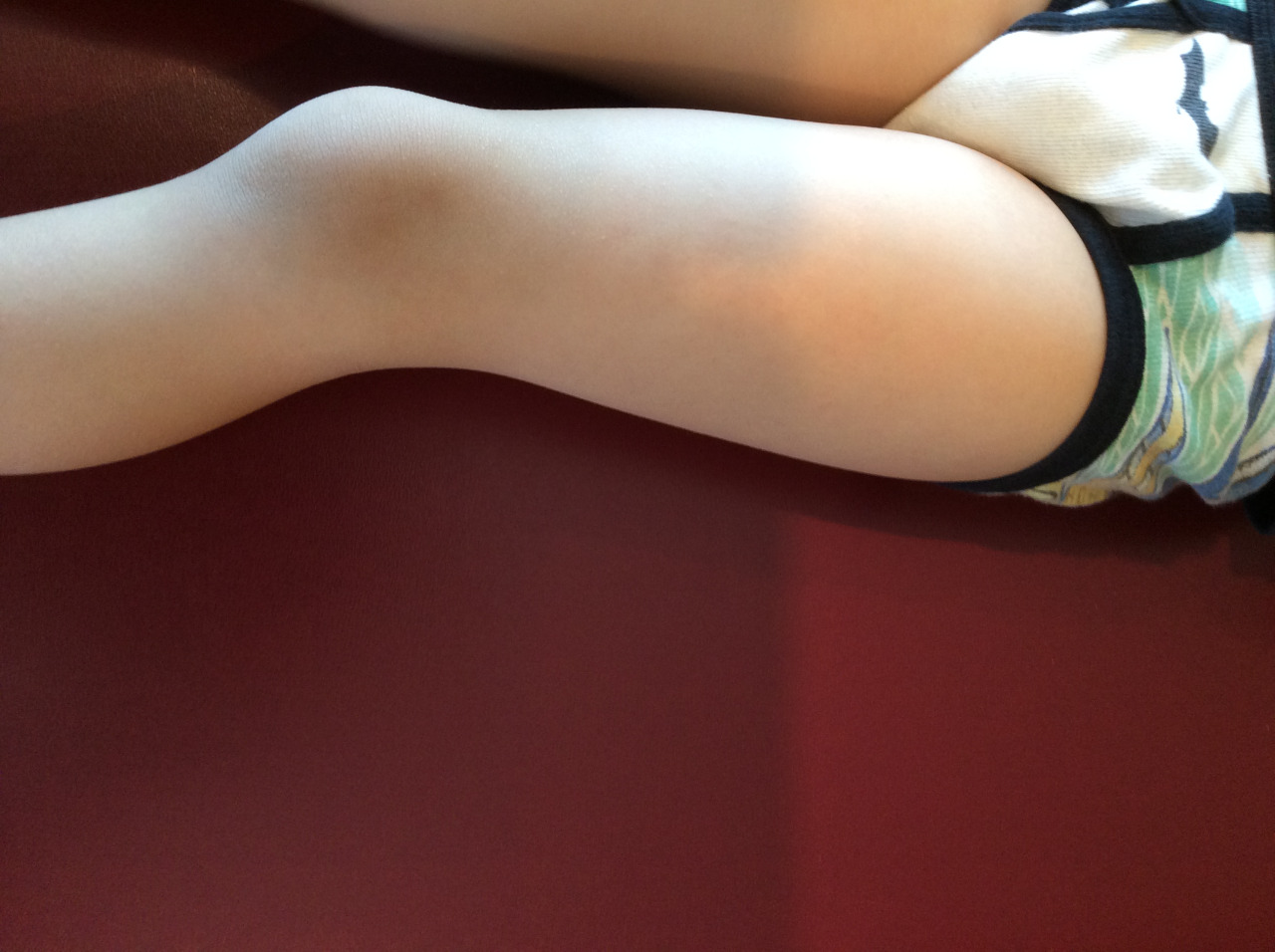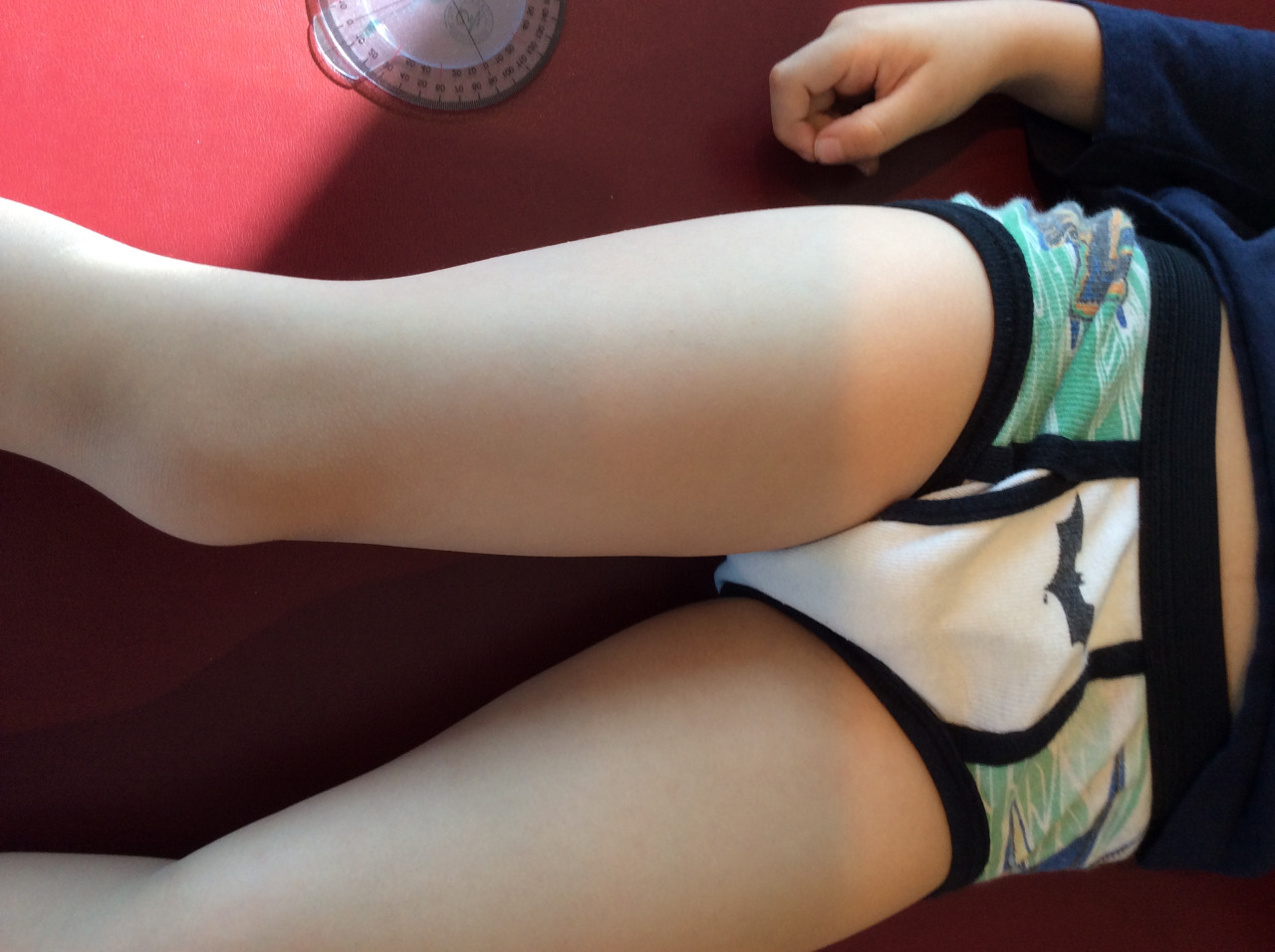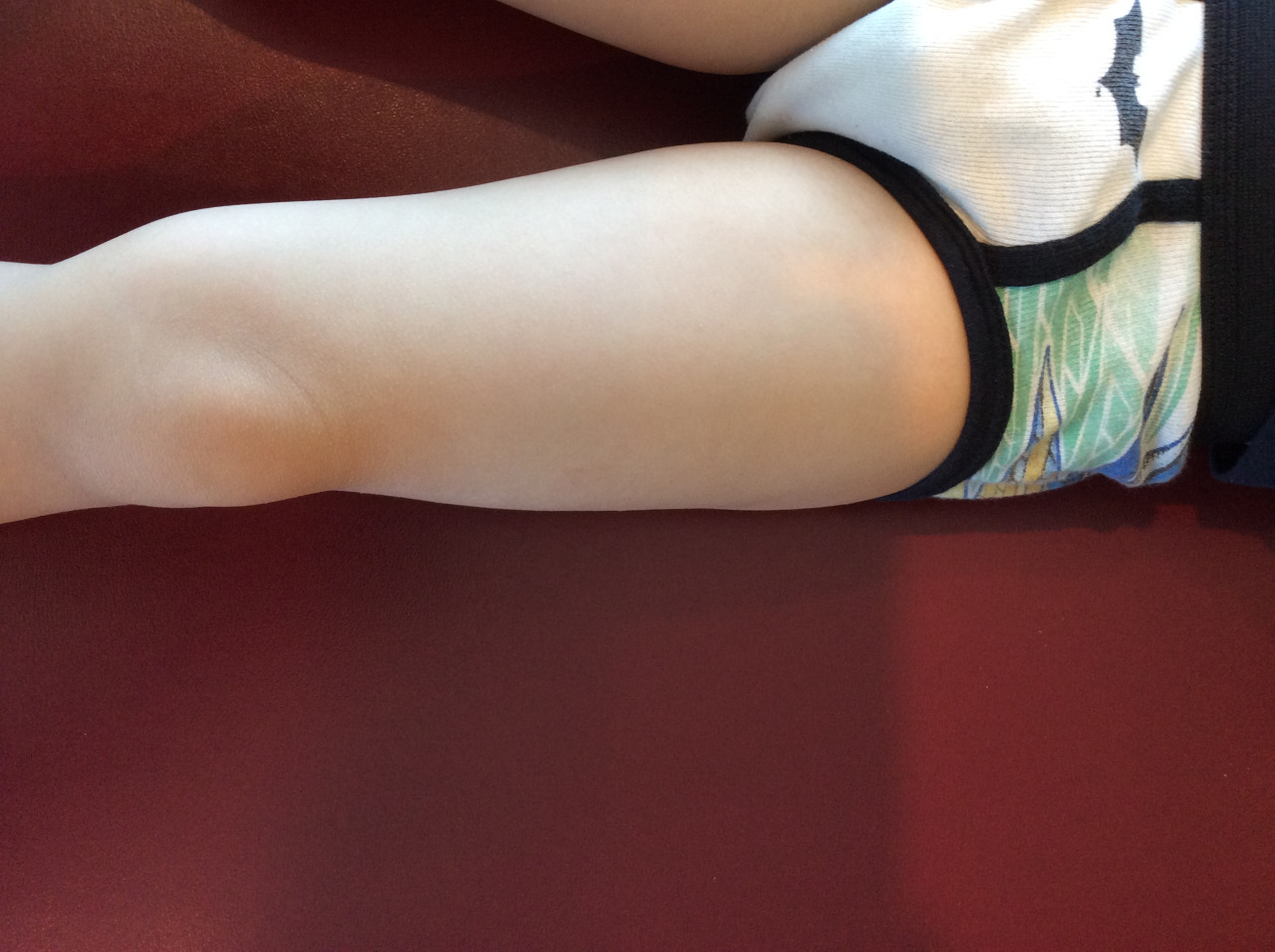Ankle Rocker and The "Z" angle
/What you need to know about the 3 rockers and ankle rocker. Clear. Concise.
What you need to know about the 3 rockers and ankle rocker. Clear. Concise.






Remember this kiddo?
We have been following the natural development of this little guy for some time now. For a review, please see here (1 year ago) and here (2 years ago) for our previous posts on him.
In the top 2 shots, the legs are neutral. The 3rd and 4th shots are full internal rotation of the left and right hips respectively. The last 2 shots are full external rotation of the hips.
Well, what do you think now?
We remember that this child has external tibial torsion and pes planus. As seen in the supine photo, when the knees face forward, the feet have an increased progression angle (they turn out). We are born with some degree / or little to none, tibial torsion and the in-toeing of infants is due to the angle of the talar neck (30 degrees) and femoral anteversion (the angle of the neck of the femur and the distal end is 35 degrees). The lower limbs rotate outward at a rate of approximately 1.5 degrees per year to reach a final angle of 22 degrees….. that is of course if the normal de rotation that a child’s lower limbs go through occurs timely and completely.
He still has a pronounced valgus angle at the the knees (need a review on Q angles? click here). We remember that the Q angle is negative at birth (ie genu varum) progresses to a maximal angulation of 10-15 degrees at about 3.5 years, then settles down to 5-7 degrees by the time they have stopped growing. He is almost 4 and it ihas lessend since the last check to 15 degrees.
His internal rotation of the hips should be about 40 degrees, which it appears to be. External rotation should match; his is a little more limited than internal rotation, L > R. Remember that the femoral neck angle will be reducing at the rate of about 1.5 degrees per year from 35 degrees to about 12 in the adult (ie, they are becoming less anteverted).
At the same time, the tibia is externally rotating (normal tibial version) from 0 to about 22 degrees. He has fairly normal external tibial version on the right and still has some persistent internal tibial version on the left. Picture the hips rotating in and the lower leg rotating out. In this little fellow, his tibia is outpacing the hips. Nothing to worry about, but we do need to keep and eye on it.
What do we tell his folks?
We are the Gait Guys, promoting gait and foot literacy, each and every post.
Usain… Again!!! How good are your powers of observation?
Take a look at this video again. Yes, we have shown it many times before. It is from a 2001 race in Monaco.
These are all incredible athletes. What can we note about the fastest of the fast?
Watch it a few more times. It took us a while too…
Really, go watch it again…
Did you see it?
Watch the vertical oscillation of the runners. At this level (or any level for that matter), outside of improving biomechanics and neuromechanics, there are really only a few things you can do to run faster. One is to have a faster cadence and another is to have a longer stride length. You can control both, but if not done concurrently, one gets better at the expense of the other.
If your cadence is slower and you try and increase stride length, you increase your vertical oscillation (ie: how much you bounce up and down). Note the handrail at the far side of the track. It makes a convenient marker for vertical oscillation. Watch this bar and watch the video again. Usain and the gent in lane 6 (Nesta Carter) have little vertical oscillation compared to the rest of the pack. Note also the close finish. difficult to say if Usain’s knee or Carters foot crossed 1st. Usiain’s time was 9.88 and Nesta’s 9.90.
Decreased cadence = Increased vertical oscillation = Less horizontal motion = Slower speeds
How about watching this video a few more times and telling us what else is up?
The Gait Guys. We are trying to help you improve your powers of observation while stretching your mind. Are we succeeding? We hope so!
Ivo and Shawn

Want more stability when trail running? Try this…
While running the other morning through about 6-8” of fresh snow (yes, it is snowing here already at 9000 feet), something occurred to me as I almost fell several times due to the undulating surface beneath my feet and the terrain to match under that.
“I need to do something to improve my proprioception, or I am going to fall (again)” I thought (yes, we both think about this stuff while running or exercising! No, I was not listening to music on this run, though cranking up some AC/DC was tempting..). If I were to increase my surface area on the snow, and make myself less top heavy, I would be more stable. How could I accomplish that?
Here is what I did, and it worked great!
First, I spread my toes. No, I wasn’t barefoot, but in my Altra Lone Peak 1.5’s; why not maximize the real estate available to my feet in these roomy shoes?
Next, I widened my stance (or base of gait). My massive 145# spread over a larger surface area would be more stable and provide stability from my weight distributed over a larger surface area.
Third, I raised my arms out from my sides (no I didn’t try to fly) to provide more input from my upper extremities to my proprioceptive system (more input from peripheral joint and muscle mechanoreceptors = more input to cerebellum = better balance)
Lastly, I slowed down from my blistering 10 min mile pace. Though this did not improve my surface area, it did give my aging nervous system more time to react.
It occurred to me that these actions were all “primitive” reactions of the nervous system when learning to walk. We did a post on that when my youngest son was learning to walk a few years ago.
Want to have better balance?
Notice I didn’t say this would make you faster. Who is more likely to fall on a corner when being chased by a predator; the tortoise or the hare?
A little practical neurology for you this morning brought to you by the geeks of gait. Ivo and Shawn.

The One Cheek Sneak and Your Gait.
Yup. You know what we are talking about. Out gassing. Passing gas. Trouser coughing. Flatulating (is that a word?) Tooting. Farting.. Call it what you like. Exemplified by Shinta Cho’s classic “The Gas We Pass”. The question is, why is it relevant to gait?
If you have followed us for any length of time, you know how important we think the glutes are. We have many posts and blog articles on their importance and exercises to strengthen them. The problem is, when most people do them, they THINK they are contracting their glutes (and some are) BUT they are ALSO contracting their (external anal) sphincter (for you neuro nerds, the internal sphincter is not under voluntary control). This results in gas retention, which may cause a stomach ache, or in rare instances, distention of the bowel. Chances are, when you relax, it will come out then (yes, you fart in your sleep, as your bedfellow for an honest answer !).
Try this. Sit down and and contract your glutes and your external sphincter. Now try and contract your external sphincter, ONLY. Contracting the external sphincter also engages the pelvic floor. Not necessarily something you need to do (unless you are treating an incontinence issue but then again that more recently under hot debate, here read our blog post here for some truths and myths on this topic) when running. OK, now just the glutes. You can palpate them (glutes only please) to make sure they are contracting. You are now experiencing isolation of the individual muscles. You should be able to access them individually, as well as together. For an added challenge in your powers of isolation, you can then try this exercise after consuming beans (as you flog your gut with their poisonous lectins) , to test your true abilities.
There are other related issues here to consider, one is the Kegal exercise. As we mentioned in another blog post (link here):
“A Kegel attempts to strengthen the pelvic floor, but it really only continues to pull the sacrum inward promoting even more weakness, and more PF (pelvic floor) gripping. The muscles that balance out the anterior pull on the sacrum are the glutes. A lack of glutes (having no butt) is what makes this group so much more susceptible to pelvic floor disorder (PFD). Zero lumbar curvature (missing the little curve at the small of the back) is the most [we would chose to say a nicely speculative] telling sign that the pelvic floor is beginning to weaken. An easier way to say this is: Weak glutes + too many Kegels = PFD.”-Nicole Crawford (1)
Many exercises are designed to help train your nervous system and create a new motor pattern, in addition to strengthening and or creating endurance in the targeted muscles. Your external sphincter probably has plenty of strength and endurance.
The Gait Guys. Bringing you the relevance in the seemingly irrelevant. All Gait; All the time…
1. Here is Crawford’s article link.
http://breakingmuscle.com/womens-fitness/stop-doing-kegels-real-pelvic-floor-advice-women-and-men
All material copyright 2013 The Gait Guys/ The Homunculus Group. All rights reserved. We have Lee and know how to use him




Forefoot Valgus or Plantarflexed 1st ray?
A little lost? Take our National Shoe Fit Program, available for instant download 24/7/365 by clicking here.
The Gait Guys. Often a valgus slant on a varus reality. Still bald. Still good looking. Improving your gait competency with each post.
The Gait Guys. Uber foot geeks. Still bald and good looking. Separating the wheat from the chaff, with each and every post.
Sometimes, you just need to add a little pressure….
Cyclists are no different than runners; often when the effort is increased (or the conditions reproduced), the compensation (or problem) comes out.
Take a good look at this video of a cyclist that presented with right sided knee pain (patello femoral) that begins at about mile 20, especially after a strong climb (approx 1000 feet of vertical over 6 miles through winding terrain).
The first 7 seconds of him are in the middle chain ring, basically “spinning” ; the last portion of the video are of him in a smaller (harder) gear with much greater effort.
Keep in mind, he has a bilateral forefoot varus, internal tibial torsion, L > R and a right anatomically short leg of approximately 5mm. His left cycling insole is posted with a 3mm forefoot valgus post and he has a 3mm sole lift in the right shoe.
Can you see as his effort is increased how he leans to the right at the top of his pedal stroke of the right foot and his right knee moves toward the center bar more on the downstroke? Go ahead, stop it a few time and step through it frame by frame. The left knee moves inward toward the center bar during the power stroke from the forefoot valgus post.
So what did we do?
· Worked on pedal stroke. We gave him drills for gluteal (max and medius) engagement on the down stroke (12 o’clock to 6 o’clock) to assist in controlling the excessive internal spin of the right leg. Simple palpation of the muscle that is supposed to be acting is a great start.
· Did manual facilitation of the glutes and showed him how to do the same
· Worked on abdominal engagement during the upstroke (the abs should initiate the movement from 6 o’clock to 12 o’clock)
· Manually stimulated the external oblique’s
· Placed a (temporary, hopefully) 5mm varus wedge in his right shoe to slow the internal spin of the right lower extremity
· Taught him about the foot tripod and appropriate engagement of the long extensors; gave him the standing tripod and lift/spread/reach exercise (again to tame internal spin and maintain arch integrity)
Much of what you have been learning (for as long as you have been following us) can be applied not only to gait, but to whenever the foot contacts anything else.
The Gait Guys. Experts in human movement analysis and providing insight into biomechanical faults and their remediation.
All material copyright 2013 The Gait Guys/The Homunculus Group. Please use your integrity filter and ask before using our stuff.
OUR SEARCH BOX IS INTUITIVE, TYPE IN YOUR KEY WORD, WAIT, THEN SCROLL DOWN.
Email us: our email is found under the "Disclaimer" Tab above.
Powered by Squarespace.